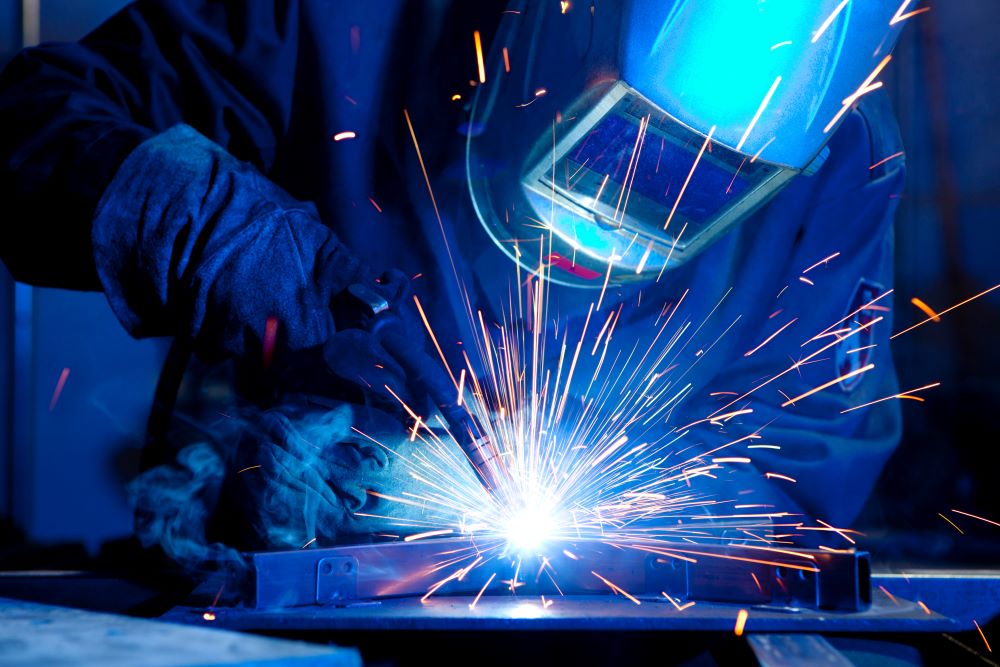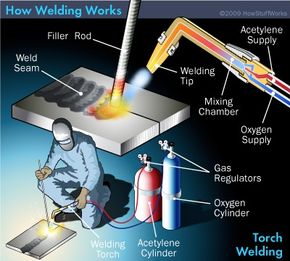Welding WPS Explained: Key Components and Benefits for Your Welding Processes
Welding WPS Explained: Key Components and Benefits for Your Welding Processes
Blog Article
The Ultimate Guide to Welding WPS Procedures: A Comprehensive Overview for Welders
In the elaborate world of welding, Welding Treatment Specs (WPS) offer as the foundation of making sure top quality, consistency, and safety and security in welding operations (welding WPS). As we dig into the various components of a WPS and explore the details of qualification and accreditation, we will discover the essential duty these treatments play in the realm of welding.
Value of WPS Procedures
Comprehending the importance of Welding Treatment Specs (WPS) treatments is important for ensuring the high quality and stability of bonded frameworks. WPS treatments function as a roadmap for welders, outlining the needed actions, specifications, and materials required to accomplish a sound weld. By adhering to WPS guidelines, welders can ensure consistency in their job, bring about reputable and structurally sound welds.
Among the key reasons WPS procedures are essential is their duty in maintaining weld quality and honesty. Following the defined welding specifications and methods laid out in the WPS aids protect against issues such as porosity, breaking, or insufficient blend, which can compromise the toughness and toughness of the weld. In addition, WPS procedures are important for ensuring conformity with market requirements and codes. By following recognized WPS guidelines, welders can show that their work meets the necessary requirements for safety and security and top quality, giving guarantee to customers, assessors, and regulative bodies. Basically, the importance of WPS procedures can not be overemphasized, as they are essential to accomplishing constant, top notch welds that satisfy market standards and requirements.

Elements of a WPS
A Welding Treatment Specification (WPS) commonly comprises crucial elements that detail the details demands for carrying out a weld, ensuring consistency and high quality in the welding process. The essential elements of a WPS include vital variables such as base steels, filler steels, preheat and interpass temperature levels, welding procedures, shielding gases, welding settings, and post-weld warmth treatment needs.
Base metals describe the products being joined, while filler steels are made use of to fill the gap in between the base metals during welding. Preheat and interpass temperatures are vital for controlling the heat input and stopping problems like breaking or distortion. The welding procedure outlines the certain technique to be utilized, whether it's gas steel arc welding (GMAW), protected steel arc welding (SMAW), or an additional method. Shielding gases secure the weld pool from atmospheric contamination. Welding settings specify the positionings in which welding can be carried out. Post-weld warmth treatment might be essential to ease stresses and boost the weld's residential properties. A complete understanding of these elements is critical for developing a thorough and effective WPS.

Certification and Certification
Having actually developed the essential parts of a Welding Procedure Spec (WPS), the focus now shifts towards the important aspects of certification and accreditation in welding techniques.

Qualification, on the other hand, is the official recognition of a welder's certifications by an appropriate qualification body or organization. Welding certifications are generally based upon the particular welding procedures, products, and positions a welder is qualified to function with. Holding a valid welding accreditation shows that a welder fulfills market standards and is skilled to perform welding tasks to the required requirements.
Producing a WPS
To establish a Welding Procedure Specification (WPS) that meets market requirements, cautious consideration of welding processes, materials, and operational parameters is vital. The very first step in producing a WPS is to determine the welding process to be used, such as more info here gas steel arc welding (GMAW) or protected metal arc welding (SMAW)

Implementing and Checking WPS
Upon settling the thorough Welding Treatment Specification (WPS) that meticulously information welding processes, materials, operational parameters, and quality control procedures, the emphasis moves to successfully applying and monitoring the established procedures. Implementation entails guaranteeing that all welders entailed in the task know with the WPS and follow it thoroughly during the welding process. This needs supplying ample training and guidance to assure adherence to the specified procedures. Keeping track of the WPS includes constant oversight to verify that welding activities straighten with the recorded specs. Evaluations, screening, and quality control steps are crucial parts of the monitoring procedure to determine any type of deviations or concerns without delay. Routine audits and testimonials of the welding treatments aid in maintaining consistency and quality throughout the task. Efficient application and surveillance of the WPS are essential for making sure the honesty, strength, and safety and security of the bonded joints, ultimately contributing to the total success of the welding job.
Verdict
Finally, understanding and following Welding Treatment Specs (WPS) is crucial for welders to guarantee high quality, uniformity, and security in their work. By understanding the elements of a WPS, getting proper certifications and certifications, developing detailed procedures, and executing and checking them efficiently, welders can improve their abilities and effectiveness in welding practices. Abiding by WPS treatments is important for creating top notch welds and conference sector requirements.
In the intricate world of welding, Welding Procedure Specs (WPS) offer as the backbone of ensuring quality, consistency, and safety in wikipedia reference welding procedures. The welding procedure details the details strategy to be made use of, whether it's gas steel arc welding (GMAW), secured steel arc welding (SMAW), or an additional technique.To establish a Welding Procedure Specification (WPS) that satisfies market standards, careful consideration of welding processes, products, and functional specifications is crucial. The initial action in developing a WPS is to recognize the welding process to be made use of, such as gas steel arc welding (GMAW) or protected metal arc welding (SMAW)Upon settling the thorough Welding Treatment Spec (WPS) that carefully details welding processes, products, operational criteria, and high quality see it here assurance actions, the emphasis shifts to efficiently implementing and keeping an eye on the well-known treatments.
Report this page